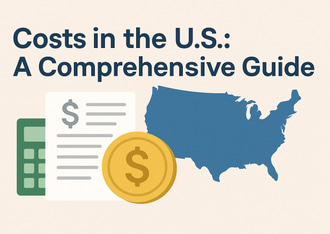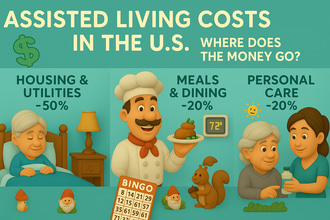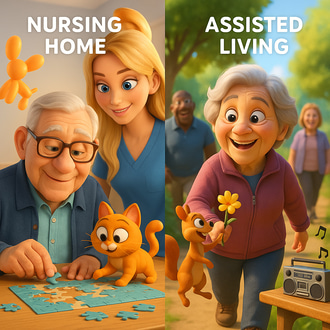As someone who helps families find senior care solutions every day, I often encounter a sobering truth: for many people, a memory care diagnosis feels like the end of the road. But my recent conversation with Loren Shook, co-founder and longtime CEO of Silverado, reminded me that it doesn’t have to be.
Under Loren’s nearly 30-year leadership—culminating in his recent retirement—Silverado has redefined what’s possible in memory care. His vision was not just to manage cognitive decline but to fundamentally transform the way we care for those living with memory impairments. As Silverado enters a new chapter under CEO Designate Wayne Sanner, the values and innovations Loren championed continue to guide its mission forward.
Culture as Clinical Strategy
Silverado’s foundation rests on three pillars: purpose, vision, and culture. At the heart of that culture is a belief in “love greater than fear,” a principle that governs everything from staffing to resident care. This isn’t just feel-good rhetoric—it’s a systematic, trainable approach that enables caregivers to respond to challenging behaviors with compassion and dignity.
The results speak for themselves. Residents are encouraged to find new purpose—whether through intergenerational programming, pet therapy, or simply tending a garden. These aren’t ancillary activities; they are core to Silverado’s therapeutic model and have been shown to improve cognitive function and emotional well-being.
Reclaiming Dignity Through Design
Sometimes innovation arrives unintentionally. In one Silverado community, decomposed granite walking paths were originally installed to add visual variety. Residents saw something more: a challenge, a journey, an accomplishment. That design element—seemingly simple—became therapeutic.
But intentional design matters too. Silverado’s “Past Review” program audits care environments to eliminate signs and practices that inadvertently dehumanize residents. Something as small as a taped-up note reading “change diapers 3x/day” can undermine a resident’s dignity and affect how others perceive them. These may seem like minor issues, but their cumulative psychological impact is enormous.
A Case for Medicaid Reform
One of the most urgent points Loren raised was the current structure of Medicaid and Medi-Cal. Silverado, like many high-performing operators, does not accept these payment sources because reimbursement levels simply don’t support their model of care.
But Loren is not suggesting more funding. He’s advocating for smarter funding: a voucher-based approach that would allow families to apply Medicaid dollars toward the provider of their choice, even supplementing that amount if necessary. This would democratize access to top-tier care and introduce market accountability into a system currently burdened by misaligned incentives.
The model wouldn’t require new spending. It would simply redirect existing funds to the consumer—empowering families, improving outcomes, and encouraging competitive improvement across the care continuum.
Science, Prevention, and a Shift in Thinking
Silverado’s NEXUS program has demonstrated a 60% improvement in cognition among early-stage dementia residents, according to research by UC San Diego. And the tools they’re using—cognitive stimulation, social engagement, purposeful activity—don’t involve pharmaceuticals.
Evidence is mounting across the field to support this kind of nonpharmacologic approach. A 2022 study between Silverado and Northwestern of a dyadic music therapy program, Musical Bridges to Memory, found that weekly sessions involving familiar music, social interaction, and simple instrument play significantly increased nonverbal sociable behaviors in people with dementia—while also reducing caregiver distress. Programs like this affirm what Loren has long understood: relationships, emotion, and engagement are central to good dementia care. This study was touted for it’s holistic approach to dementia therapy as well as being one of the first studies to focus not only on the dementia resident, but also the caregiver.
New diagnostic tools are also changing the game. Simple blood tests can now detect Alzheimer’s-related biomarkers before symptoms arise. Silverado is preparing to incorporate olfactory stimulation therapy, a new frontier in neuroscience, shown to grow the hippocampus and significantly improve memory, even in individuals without cognitive impairment.
What’s Next
Memory care is evolving. We now have the tools to delay decline, reduce emergency room visits, and dramatically enhance quality of life. But as Loren reminded me, the biggest hurdle is no longer innovation—it’s adoption.
If we want to meet the needs of an aging population, we must elevate the standard. That means embracing programs like NEXUS, rethinking our funding structures, and putting dignity back at the center of care.
The future of memory care isn’t theoretical. It’s happening right now, with operators like Silverado. With Loren’s legacy now in the hands of new leadership, the challenge—and opportunity—for the rest of us is to carry that vision forward.






































































